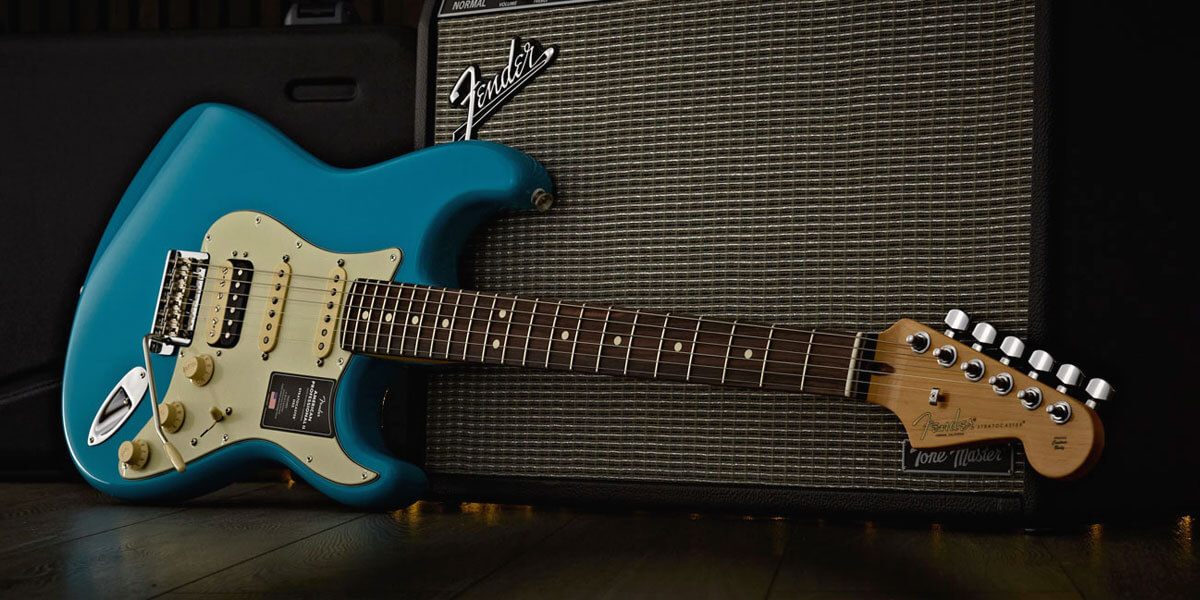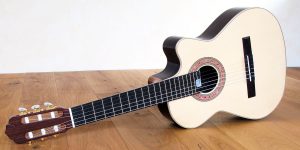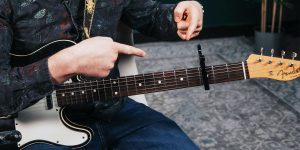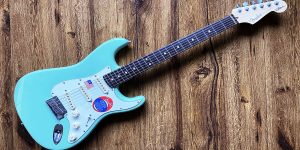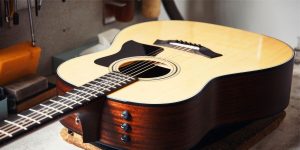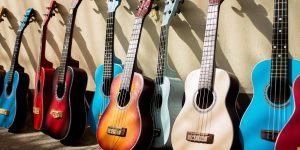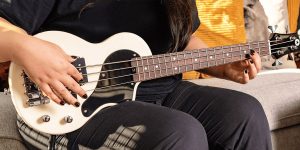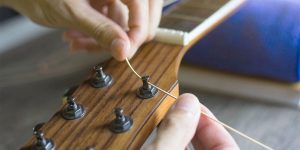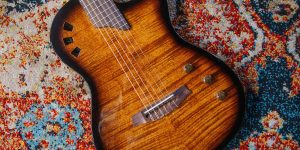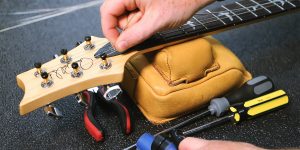Guitars, with their variety of shapes, sizes, and styles, stand as a testament to creativity and innovation in the world of music. What might appear as variations in aesthetics among guitars goes far deeper, impacting not only their visual appeal but also the fundamental aspects of sound and playability.
This article explores the fascinating realm of electric guitar shapes, where differences in form give rise to distinct tonal characteristics and unique playing experiences.
Historical overview of electric guitar shapes
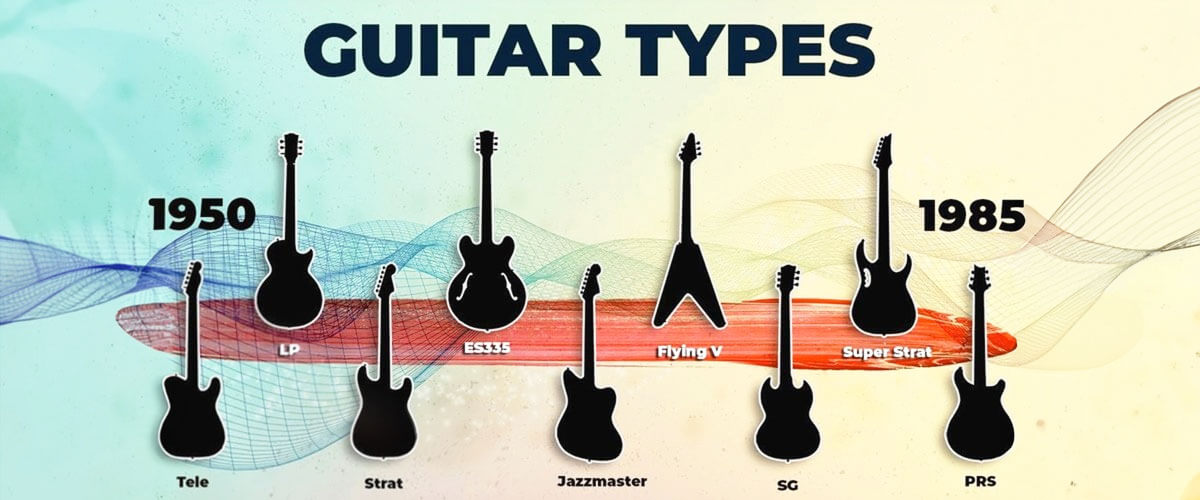
The emergence of the first electric guitars marked a transformative moment in the history of music and instrument design. While the traditional acoustic guitar had its own charm, the electric guitar introduced a new realm of sonic possibilities that would forever shape the landscape of popular music.
The birth of the electric guitar can be traced back to the 1930s when innovators like Adolph Rickenbacker and George Beauchamp began experimenting with amplification techniques. These innovators aimed to create instruments that could produce louder and more versatile sounds, making them suitable for the emerging genres of jazz, blues, and eventually rock ‘n’ roll. The result was the “frying pan” guitar introduced by Rickenbacker and Beauchamp in 1931—a lap steel guitar with a horseshoe-shaped magnet pickup.
However, it was the introduction of the Gibson ES-150 in 1936 that truly marked the inception of the modern electric guitar. In 1954, Leo Fender introduced the Stratocaster, a more curvaceous and ergonomic design compared to the Telecaster. The Stratocaster incorporated three pickups, a contoured body, and a tremolo system, setting a standard for versatility and comfort. Its impact was profound, and many subsequent electric guitar models drew inspiration from its innovations.
The influence of aesthetics and ergonomics
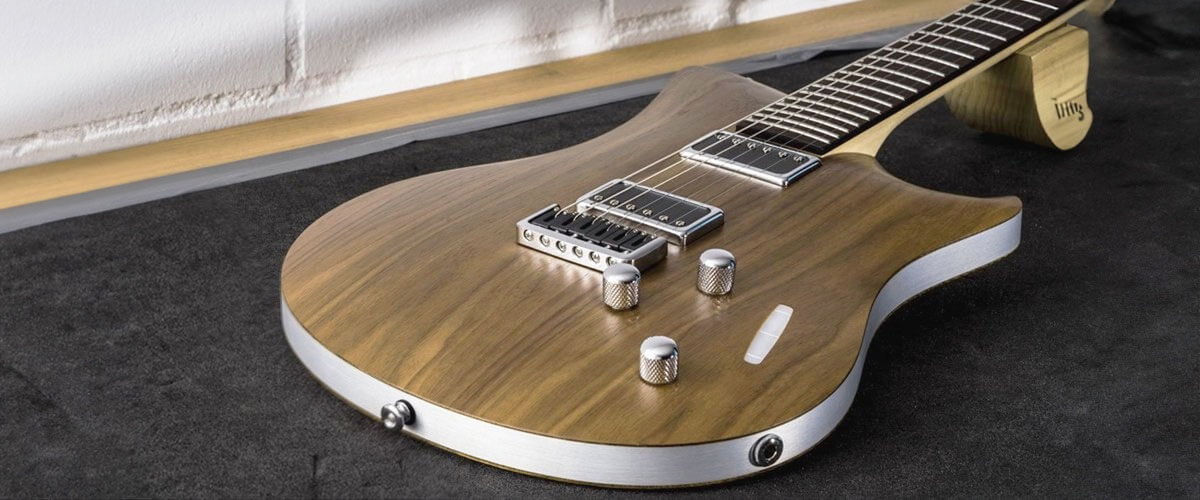
Electric guitar body shapes go beyond mere aesthetics; they play a significant role in the visual appeal and practical aspects of playing the instrument. For example, the classic contours of a Fender Stratocaster are often associated with rock and pop, while the elegant lines of a Gibson ES-335 might evoke a jazz or blues atmosphere. However, guitar body styles also affect practical considerations:
- A well-designed body shape conforms to the player’s body, making it more ergonomic to hold and play for extended periods.
- The balance and weight distribution of a guitar can affect how comfortable it is to wear with a strap and how well it sits on the player’s lap while seated.
- The shape affects the ease of fretting, reaching different parts of the fretboard, and performing techniques such as bends, slides, and vibrato. A guitar that fits comfortably against the body and offers easy access to all frets enhances playability.
Different electric guitar designs can also influence how a musician presents themselves on stage and interacts with their instrument:
- A more aggressive, angular shape might encourage dynamic movements and energetic performances, while a curvier shape could evoke a more laid-back or classical vibe.
- Musicians might choose a shape that aligns with their genre, persona, or the atmosphere they want to convey to the audience.
- A guitarist holding an iconic shape like a Flying V or an Explorer might draw attention and project a sense of uniqueness and individuality.
- The shape becomes part of the player’s identity. It’s not just an instrument; it’s an extension of the musician’s personality and style.
Solidbody electric guitar shapes
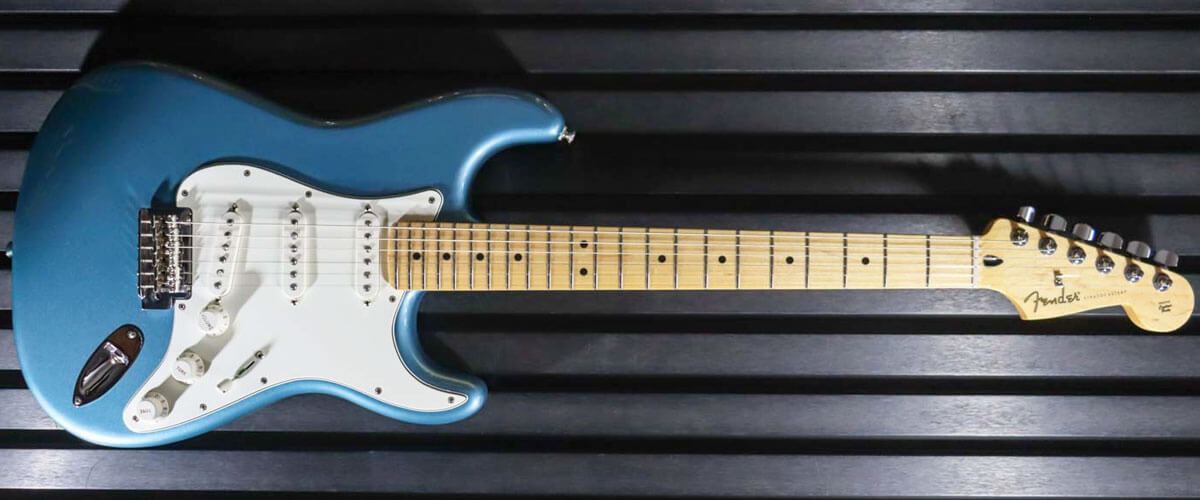
It comes in a variety of cool guitar shapes, each with its own unique design and characteristics. I’d like to describe the most common solid-body electric guitar shapes which might align with your playing style, genre preferences, and comfort.
Iconic electric guitar shapes
Stratocaster
The Stratocaster’s symmetrical double-cutaway design allows easy access to higher frets, enabling players to execute intricate solos and bends effortlessly. The ergonomic body contours fit comfortably against the player’s body, offering enhanced playing comfort for both seated and standing positions. The three pickups provide a diverse tonal palette. The bridge pickup offers bright, cutting tones, the middle pickup adds clarity and versatility, while the neck pickup delivers warm, smooth sounds. The Stratocaster features a synchronized tremolo system, allowing players to produce expressive vibrato and subtle pitch bends.
Pros
- suitable for numerous musical styles;
- ideal for long gigs or studio sessions;
- iconic Aesthetics.
Cons
- single-coil noise;
- tremolo sensitivity.
The Stratocaster is ideal for cutting through rock mixes and blues music. The Stratocaster’s twangy bridge pickup is synonymous with the surf and country guitar sounds.
Telecaster
The Telecaster features a single-cutaway body with clean lines, making it easy to access the higher frets. It typically has two single-coil pickups: one at the bridge and one at the neck. These pickups contribute to its signature bright and twangy sound. The bolt-on neck construction offers easy maintenance and facilitates quick neck replacements if needed.
Pros
- reliable and easy to use.
- rugged construction makes.
- bright and twangy sound.
Cons
- limited tonal versatility.
- less suitable for high-gain styles.
The Telecaster’s vintage appeal and twangy sound make it a popular choice among rockabilly guitarists. The neck pickup offers warm, smooth tones perfect for blues playing, giving the Telecaster a versatile edge.
Les Paul
The Les Paul typically features a single-cutaway, solid-body design that exudes elegance and class. The neck is set into the body, contributing to sustain and resonance. It is often equipped with two humbucker pickups, which provide a thick, powerful, and noise-resistant sound. Many Les Paul models feature a carved maple top, contributing to its rich tonal character and distinctive appearance.
Pros
- rich and sustained tone.
- cover various genres.
- elegant aesthetics.
Cons
- can be relatively heavy.
- might limit access to the higher frets.
It’s a go-to choice for many rock guitarists. In certain jazz contexts, Les Paul’s rich, full-bodied tone can add a unique flavor to the genre. Its ability to deliver powerful, heavy tones makes it a favored choice in the hard rock and metal genres.
Unconventional guitar body shapes
Flying V
Introduced in the late 1950s, the Flying V’s iconic shape and sound have made it a symbol of innovation in the world of electric guitars. The most defining feature of the Flying V is its asymmetrical V-shaped body, which sets it apart from traditional guitar designs. Similar to many other Gibson models, the Flying V features a set neck construction that contributes to sustain and resonance. It is often equipped with two humbucker pickups, which provide a powerful and versatile sound.
Pros
- unique aesthetics.
- high fret access.
- distinctive sound.
Cons
- can be slightly top-heavy.
- might be less comfortable for seated playing.
The Flying V’s powerful and sustain-rich sound makes it a favorite among rock and metal guitarists. While not as common in blues, some blues-rock fusion players appreciate the Flying V’s versatility for adding a modern twist to their sound.
Randy Rhoads
Randy Rhoads’ customized guitar was based on the Gibson Flying V, but he made several modifications to it, resulting in a distinct instrument. Rhoads’ guitar featured more angular, pointed wings compared to the traditional Flying V, resembling the shape of an aviation wing.
Rhoads’ guitar was famously adorned with a black-and-white polka dot finish.
Pros
- unique visual identity.
- improved balance.
- high-gain sound.
Cons
- unconventional shape.
- limited availability.
Rhoads incorporated classical music elements into his playing, creating a unique blend of neo-classical and heavy metal styles.
Explorer
The most prominent feature of the Explorer is its asymmetrical body shape, resembling an elongated “V” or “X.” Like many electric guitars, the Explorer features a solid-body design, contributing to its sustain and resonance. It is often equipped with two humbucker pickups, which provide a thick and powerful sound.
Pros
- unique aesthetics.
- easy access to the upper frets.
- powerful sound.
Cons
- the body might feel unbalanced.
- might be less ergonomic for some players.
The Explorer’s powerful and aggressive tone aligns well with various subgenres of rock, from classic rock to hard rock.
Semi-hollow and hollow body electric guitar styles
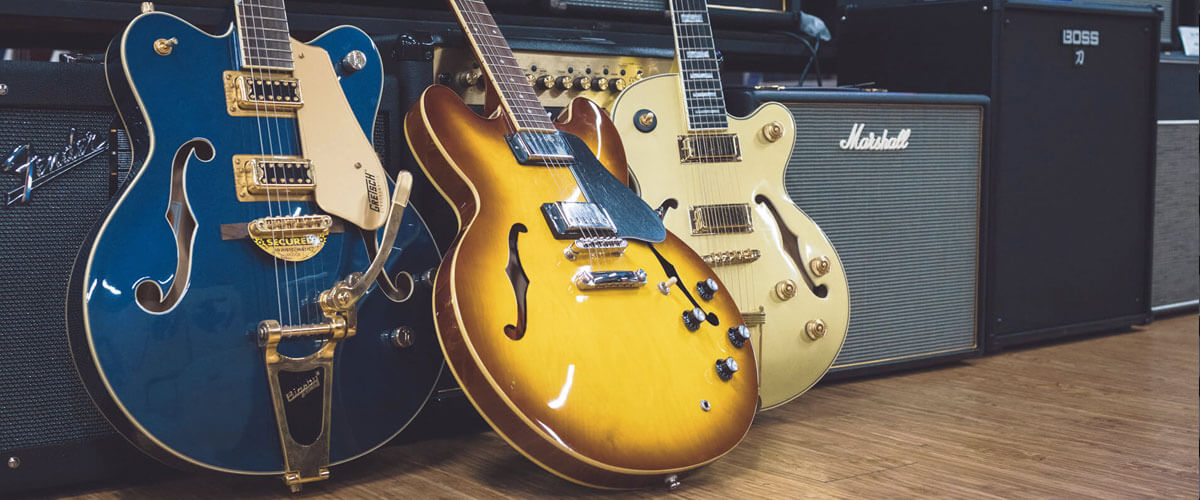
These electric guitars are both characterized by their distinctive construction, which incorporates open spaces within the body of the guitar. Their designs contribute to unique tonal characteristics and have been favored in various musical genres.
Semi-hollow body shapes
Models like this feature a solid central block running through the body, with hollow wings on either side. This design balances some of the feedback issues associated with fully hollow guitars while retaining some of the warmth and resonance.
Pros
- reduced feedback.
- balanced tone.
- suitable for a range of genres.
Cons
- might not fully capture the depth of tone.
They are well-suited for blues, rock, jazz, and alternative music. Musicians who want a blend of warmth, resonance, and reduced feedback often gravitate towards semi-hollow models.
Hollow body design
They have a fully hollow interior, often with sound chambers carved out of the body. These guitars are known for their warm, resonant, and acoustic-like tones. In addition, they tend to produce a rich sustain and are capable of producing a full, lush sound.
Pros
- warm tone.
- enhances the resonance of the guitar.
- the larger body allows for more air to move within.
Cons
- more susceptible to feedback.
Hollow body guitars are particularly popular in jazz and blues genres.
Choosing the right guitar shape
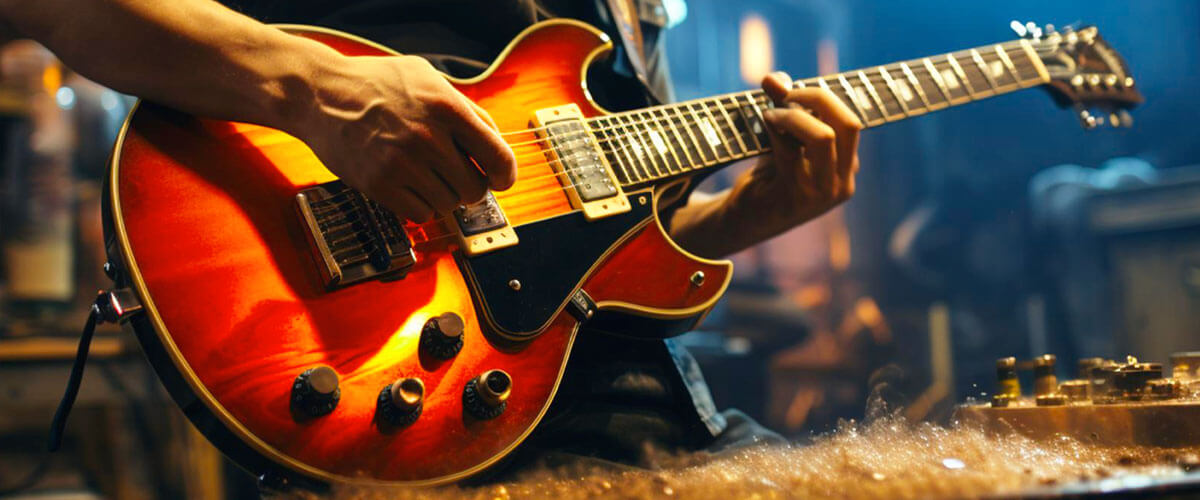
The choice of a guitar can greatly impact your playing experience, comfort, and the type of music you play. It can be challenging to remember all of the electric guitar shape names. That is why consider the following factors when selecting a guitar shape:
- Playing style and genre. If you play heavy metal or rock, you might prefer a guitar with a sleek and aggressive design, like the Flying V or Explorer. Jazz and blues players often lean towards semi-hollow or hollow body guitars due to their warm and resonant tones. If you’re into versatile styles like pop, alternative, or indie rock, guitars like the Stratocaster or Telecaster might suit your needs.
- Comfort and ergonomics. Consider how the guitar feels against your body, especially when sitting down. Factors like body shape, weight distribution, and the placement of knobs and switches can influence comfort. If you find a guitar’s shape uncomfortable to hold or play, it might hinder your playing enjoyment.
- Tonal preferences. Different guitar shapes often produce different tones. Solid-body guitars like the Stratocaster and Les Paul generally offer a balanced and versatile tone.
- The hollow body and semi-hollow body guitars tend to have warm, resonant, and acoustic-like tones. If you prefer bright and twangy tones, a Telecaster might be more suitable.
- Player’s body size. If you have a smaller frame, a large and heavy guitar might be less comfortable to handle. On the other hand, a larger guitar can provide a fuller sound but might be cumbersome for smaller players.
- Visual appeal and personal preference. A guitar that resonates with your personal style and taste can be more inspiring to play. If a particular shape speaks to you visually, it might align well with your overall musical identity.
- Experiment and try before you buy. Playability and comfort can vary, and your hands-on experience will give you valuable insights into how a particular shape suits your playing style and body.

